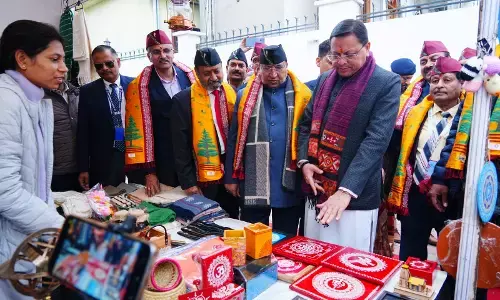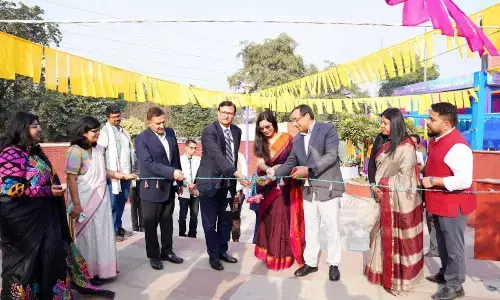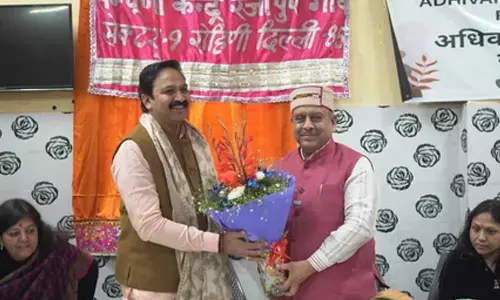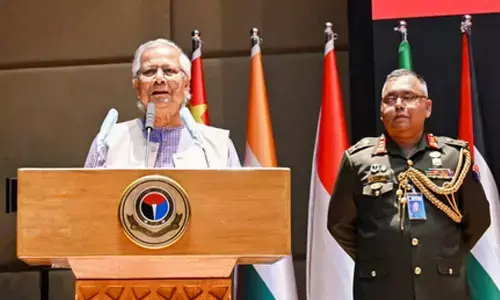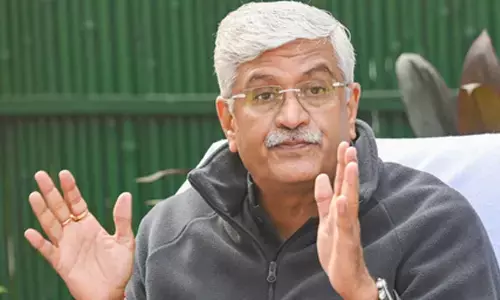Farmers prove the power of Ahimsa

Representational Image
It is always heartening to see non-violent protests in the world, India being no exception. Indians have seen much violence in recent times in all parts of the country.
It is always heartening to see non-violent protests in the world, India being no exception. Indians have seen much violence in recent times in all parts of the country. Some of this violence is externally aided and abetted while some more of it is due to political overtones. Amid all this chaos it was heartening to see farmers of Punjab-Haryana, Western UP belt stage a year-long non-violent protests around the national capital to seek justice and fairness.
The Samyukt Kisan Morcha, an umbrella organisation of about 40 unions, launched the stir seeking scrapping of the three farm laws while seeking guaranteed MSP and withdrawal of the Electricity Bill a year ago. Speculation was rife then over the intent of the farmers unions and it was suspected that it would soon get politicised. Credit must go to the union leaders who stood firm in not allowing any political party or leader to exploit them. They also were firm on non-violent protest. It would have been difficult for anyone else to stage such a protest-marathon.
The protest could sustain itself more due to the nature of the cultural background of the protestors. Their firm resolve not to allow abrasive elements into them helped them earn the respect of one and all in the country. The land of Mahatma has also been violent sometimes, but it always laid emphasis on non-violence. The spirit of peaceful protest and community living was exemplified in the protest sites. Nonviolence is the personal practice of not causing harm to one's self and others under every condition. It may come from the belief that hurting people, animals and/or the environment is unnecessary to achieve an outcome and it may refer to a general philosophy of abstention from violence. It may be based on moral, religious or spiritual principles, but also the reasons for it may be purely strategic or pragmatic.
Mahatma always believed in a general acceptance of the need for nonviolence as a means to achieve political and social change. Gandhian nonviolence is both a philosophy and strategy for social change that rejects the use of violence, but at the same time it sees nonviolent action (also called civil resistance) as an alternative to passive acceptance of oppression or armed struggle against it.
In general, advocates of an activist philosophy of nonviolence use diverse methods in their campaigns for social change, including critical forms of education and persuasion, mass non-cooperation, civil disobedience, nonviolent direct action, and social, political, cultural and economic forms of intervention. These farmers used all these methods at their disposal except for an aberration here and there a couple of times. While they boycotted politicians, they perceived as inimical to their interests, they held dharna and gherao alongside non-cooperation as their instruments to reach their goals. Mahatma was of the view that no religion in the world has explained the principle of Ahimsa so deeply and systematically as is discussed with its applicability in every human life in Jainism. The practicality of Ahimsa was amply displayed by the farmers' stir. That the mightiest have to bow before it also has been established. Those who prefer violence and their thoughts and actions should learn a lesson or two from them.








